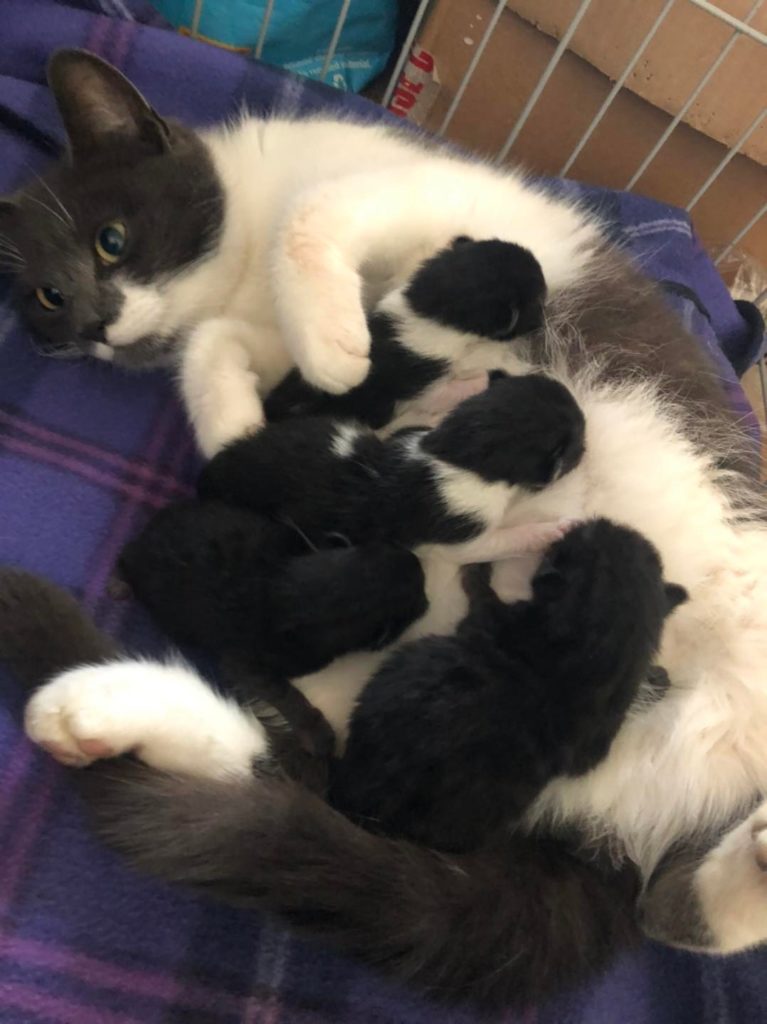Baby Boom….
From previous blogs it’s clear I’m an advocate for spaying and neutering cats. It’s something that can solve so many behavioural problems and has a high number of health benefits too. So I was disappointed to read an article this week that states cat neutering levels in the UK have dropped to a nine year low. Another of my recent blogs covered the rise in strays in the UK, which I’m fairly sure most behaviourists will agree is likely to be linked. From a psychological point of view, neutering and spaying your cat is a much kinder option than leaving them entire. You can read why here:
https://www.ailurophile.co.uk/?page_id=262
The article regarding the neutering levels dropping can be found here:
And for anyone interested in the health benefits, here’s a list of them compiled by the Cat Rescue Network (an organisation based in Ottawa, Ontario working to rescue homeless and feral cats.):
Health Benefits – Spaying or neutering your pet eliminates or reduces a wide variety of health problems that can be very difficult and expensive to treat. Females no longer have to go through heat cycles and the health- and behaviour-related problems that accompany them. Males are no longer controlled by their hormones, reducing aggressive behaviour and the tendency to roam. But most importantly, spaying and neutering eliminates or reduces many types of cancer, tumours and other serious health complications. The simple fact is that neutered cats generally live longer, healthier lives.
At the same time, cats that carry harmful genetic traits such as hip dysplasia or epilepsy should be neutered to prevent the spread or continuation of these conditions and others like them.
Fewer Injuries and Infections – Since neutered animals no longer feel the need to roam to look for a mate, they have less chance of being involved in bloody fights that leave them with scars on their faces or missing parts of their ears and tails. At the same time, the threat of abscesses caused by bites, infections and diseases transmitted by fighting and other contagious diseases are greatly reduced—allowing you to avoid expensive veterinary bills. They are also at a reduced risk of being involved in traumatic accidents such as being hit by a car if a cat is neutered.
Fewer Diseases and Other Health Problems – After euthanasia, cancer is the number one killer of cats. It is very common for vets to see entire cats for infections, conditions and diseases that are caused primarily by repeated surges of hormones.
MALES: Statistics prove that neutered male cats are healthier. Many diseases and health problems are caused by the effects of testosterone, a hormone produced in the testicles. By removing the source of testosterone, neutering reduces and eliminates the risks of many cancers and other hormone-related medical conditions. None of the behavioral or medical problems caused by testosterone are rare. Veterinarians deal with them on a daily basis.
Neutering eliminates the chances of developing:
- Testicular tumours and cancer. There are several types of tumours, both benign and malignant, that can arise within the testicles.
Neutering greatly decreases the chances of developing:
- Prostatic disease.
- Infections and disorders of the prostate glands. Prostate conditions such as prostate enlargement, cysts, and infection are all related to the presence of testosterone.
- Perianal tumours—These are tumours whose growth is stimulated by testosterone these are commonly observed in older, entire cats. Perianal gland cancer is the third most frequently diagnosed cancer in males.
- Serious types of hernias.
- Infections and disorders of the prepuce (the outer covering of the penis).
FEMALES: Spayed females are happier, healthier pets. The more heat cycles an unspayed cat goes through, the more susceptible she is to serious diseases. During an ovariohysterectomy (spaying), the uterus and ovaries are removed, ensuring that the hormones that cause health- and behaviour-related problems are no longer produced. At the same time, many cancers, tumours and other medical conditions are reduced or eliminated.
Spaying eliminates the chances of developing:
- Pyometra. Pyometra is a serious and potentially fatal infection of the uterus experienced by many unspayed cats. If it is left untreated, a cat will most likely die.
- Ovarian cancer, cysts and infections. Ovarian cancer is a common occurrence in entire females.
- Uterine cancer and uterine infections. These are common occurrences in entire cats, especially when older.
- Acute metritis (infected uterus). This can be potentially fatal if not treated in time.
- Difficult pregnancy and delivery. This is common in older and ill cats.
- Pseudopregnancies. Some females go through a false pregnancy every time they come into heat.
Spaying greatly decreases the chances of developing:
- Breast cancer and tumours. The rate goes down to almost zero if the spay is done before the first heat cycle. Breast cancer is the third most common cancer in cats.
- Tumours of the reproductive system.
- Mammary cancer. Mammary cancer is very common in older unspayed females, and is the most common cancer to spread to the lungs.
- Mastitis (infection of the mammary glands). This can be potentially fatal if not treated in time.
- Mammary tumours. Unspayed females have about a 7 times greater chance of getting mammary tumours.
- False pregnancies.
- Certain skin conditions related to hormonal imbalances.

(Photo source: Rossendale Responsible Animal Rescue, Facebook Social media)
